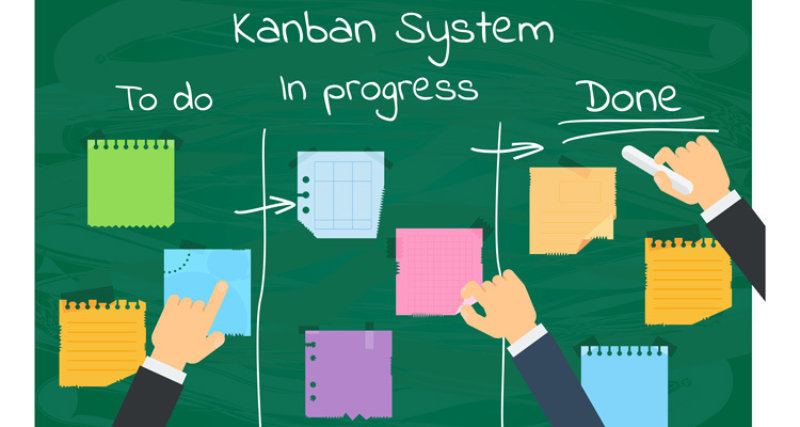
As citizens and taxpayers, I’m sure we all like to see our governments working to become more efficient and effective. And here at Planview AgilePlace, we’re obviously pretty bought-in to the idea that applying Lean-Agile to an organization’s operations can bring dramatic productivity improvements. So, we’ve been excited this past year to see strong signs that people in the government sector are working hard to make Lean-Agile work for their, admittedly very large and very complex projects. We participated in the Agile DC conference last fall and the ADAPT group’s Agile in Defense conference this spring and now we’re looking forward to GLASScon in June. There are lots of great conversations about how to make government better from the practitioner level all the way up to senior federal executives.
Case in point is our friend Rich Kostro. Rich is a Georgetown classmate of Jon’s and a senior level consultant in the federal space, working most extensively at the moment with the FBI. Rich is working to bring Kanban to that organization and brings a great perspective to us all here about the gigantic opportunity, the very real challenges, and the practical steps we can take to move forward. Highly recommended!
Guest Blog – Rich Kostro of Advenio Strategies
The federal market space is ripe for the introduction of Kanban best practices. According to the Federal IT Dashboard, last year the government spent $78.7 billion (yes, with a ‘B’) on IT projects, including investments in COTS, GOTS, upgrades and an army of consultants and contractors to glue it all together. These projects ranged in scope from the very smallest programs of only several thousand dollars to the mega, multi-agency initiatives, such as the Federal Data Center Optimization Initiative and the implementation of the Federal CIO Council’s “Cloud Smart” Initiative. The size of this portfolio and increasing pressure on financial resources makes an opportunity for Kanban enthusiasts who can offer the government increased efficiency.
Understanding the Challenges
Yet despite the potential, the federal market space has not yet embraced Kanban-style management. Why is that? In the almost 15 years that I have been involved in the business management of federal IT portfolios, I have identified three main challenges that must be overcome:
- Although the mechanics of a Kanban system are intuitive, understanding the need for it is not;
- Some see Kanban as a threat to middle management; and
- Kanban metrics do not align to most agencies’ compliance and oversight reporting requirements.
The first challenge, helping the government understand the need for Kanban, is really an acknowledgement that federal IT project managers must go through the same evolution as their private sector counterparts, but with a number of critical differences. First, many federal IT project managers are not IT professionals by training. Often they are on a “headquarters tour” required for a promotion in their field. This leads to an experience gap because the excellent management skills that many senior government personnel bring are not paired with a deep foundation in IT. The “headquarters tour” phenomenon together with the political cycles also leads to relatively high turnover, which interferes with senior leaders’ ability to make systemic changes. Finally, the inability to measure results by their impact on profitability makes it difficult to identify best practices. Ultimately these factors combine into a diminished accountability for results.
This lack of experience and accountability forces many federal IT project manager to fall back on what makes intuitive sense, which is something the traditional waterfall-style development model excels at. It seems both logical and prudent to gather all your requirements before you begin development, or even the next spiral of development. It seems like good business sense to ask for cost, schedule and performance estimates from your development team, and track them in MS Project. Private sector IT professionals, trained in their field and motivated by profit, had to evolve through SDLC, PMBOK, CMMI, SCRUM, and Agile before they understood that what seemed intuitive was often not helpful. It is true that Kanban’s elegance is in its simplicity, but a true understanding of its benefits is not always apparent until you’ve seen a world without it first.
A second challenge to introducing Kanban within the federal market space is the perceived (or actual!) threat it posses to middle management. Kanban succeeds because it flattens the organization and delegates mission responsibility to every member of the team. In such a scenario, how are the middle managers to prioritize the various requirements? With significantly reduced development cycles, how can they provide feedback? Most importantly, how can they demonstrate leadership and control when their Gantt chart shows requirements, development, testing, and deployment are all happening simultaneously? Middle managers who are not able or willing to think creatively on how they can add value often find Kanban intimidating.
Finally, the third challenge to introducing Kanban to the federal market space is the fact that Kanban accepts a level of uncertainty when dealing with IT projects, while most agencies’ oversight functions are biased toward predictability. For example, the budgeting process requires milestones be identified at least one year out to the White House Office of Management and Management OMB and reported on quarterly; while the contracting process is so onerous that it often takes months to get a team in place that can then expect to be in place for up to five years before they are re-competed. For IT projects, this bias towards predictability is seen in the metrics used to measure the success of a development effort. Whereas private sector organizations may use measures of profitability or cash flow, such as NPV or IRR to determine return on investment, government agencies often use metrics such as EVM that describe deviations from a baseline plan. It is difficult for Kanban-based projects to do well in this environment because the failure to have a baseline plan is often seen as a sign that a project is disorganized, rather than the fact that it is operating at the cutting edge of management practices.
The Way Ahead
Fortunately, all is not lost. It is possible to introduce the best practices of Kanban into the federal market place with a little creativity.
First, sell what they know. The advantage of working with federal IT project managers who may have begun their careers in a completely different vertical is that they often do not care about the theological battles that happen inside the IT community. If you try to enter the government market space selling Kanban as your differentiator, you will likely get a cold reception. They’ve never heard of it. They don’t care. They’ll ask “isn’t that like Agile, which is just a way of saying that you don’t want to develop requirements?” However, if you come in selling improved EVM scores (because Kanban helps you come in under budget and ahead of schedule), then you are starting out speaking a language they know and can appreciate.
Second, provide what they need. One of the biggest challenges IT projects have in the government is in telling a good news story, precisely because they do not measure ROI in a way that people can relate to. Kanban can help with the metrics it enables. Talk about customer responsiveness, as measured in the time it takes to fix bugs or add new features. Talk about how quickly requirements are addressed and put into production, as compared to traditional waterfall projects which have all their requirements come on-line at once at the end. Most agencies struggle with demonstrating success. The quick-to-market approach Kanban uses can help with this challenge.
Finally, meet them half way. Kanban enthusiasts will tell you Gantt charts and estimates are nothing but a collection of hopes, lies and dreams, but for many managers they are a requirement. Instead of wasting your time fighting against building them, save your political capital for a later day. Provide milestones for significant increments – for example 6 months apart – but manage the day to day on your Kanban board. You will have the flexibility to build in a way that makes sense, and your boss will be able to chart your progress in the way that he knows how.
The federal government is notoriously slow in adopting the most current thinking in organizational design and management, but it is also incredibly loyal to the concepts it has embraced. As Kanban gains prominence in the private sector, and as it slowly seeps into the government as forward thinking IT project managers implement it, a critical mass inside the federal government will surely build. In the mean time, enthusiasts will be best served by patiently educating their clients on how Kanban works and creatively applying it to meet existing requirements for organizational control and oversight.
——-
Rich is the President of Advenio Strategies, a strategic consulting firm in Washington, DC. He offers almost 15 years experience designing and managing IT portfolios across the federal government, including inside the Department of Defense and at the FBI. He is currently working with the FBI to design their Bureau IT Knowledge Repository (BIKR) using the tenants of lean Kanban.



